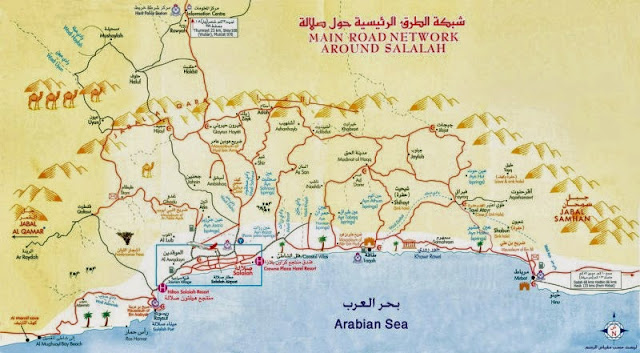Salalah Known for its glorious history, UNESCO heritage place,Ubar Lost city of Arabia,Al-Baleed Fort,Jobs Tomb, Khor Ruri,Prophet Umran Tomb near hafa house
03 May 2011
Al-Baleed Fort Salalah -UNESCO Heritage Site
Well-labelled and atmospherically lit at night, the ancient ruins of Al Baleed belong to the 12th-century trading port of Zafar. Frankincense was shipped from here to India in exchange for spices. Little is known about the port’s demise, but the excellent on-site Museum of the Frankincense Land charts the area’s settlement since 2000 BC and illustrates the nation's maritime strength, including its recent renaissance. The site includes several kilometres of landscaped paths and the adjoining reed beds make for good birdwatching.
Open: Weekdays 8am-2pm, 4-8pm; Thursday-Friday 4-8pm
The city of Al Baleed lies on Salalah’s coastal strip and covers an area of 640,000 square metres. During the Middle Ages the town played an important role in world trade through its harbour and links with the ports of China, India, Sind, Yemen and East Africa, as well as with Iraq and Europe. A German university and Omani team date the site from the Islamic period, though the area was inhabited from the end of the 5th and beginning of the 4th millennia BC. The city was re-established in the 4th century AH/10th century AD at the time of the Mujais dynasty and was rebuilt during the Habudhi period.The main archaeological discoveries in al Baleed include the great mosque which has around 144 pillars and is nearly square in shape. It has outbuildings, a minaret and is believed to have been built during the 7th century AH/13th century AD and remained in use until the 11th century AH/17th century AD. The city is surrounded by a moat.In the Wusta (central) region stone implements have been excavated from the Asholite civilisation. An American and Omani team are working on the migration of early man from Africa to Asia via Oman across a land bridge that existed before the Red Sea trench was formed.Excavations continue in the Ja’alan (eastern) region on the sites at Ras al Hadd and Ras al Jinz where it is believed there has been human development from the Holocene period in the 7th millennium BC to the arrival of Islam. Italian, French, British and Omani teams are focusing on maritime trade in this area during the 2nd half of the 3rd millennium BC. Pits in the area suggest that 4th millennium BC fishing communities builtround huts directly onto the rocks, and finds have included copper fishhooks, small implements, spear-heads, and potsherds originating in Mesopotamia..Marco Polo visited Oman in 1285, extolling a frankincense port called al-Baleed, where contemporary archeologists now sweat in roped-off surrounds on the outskirts of Salalah, Oman's second city. Even more revered is Ibn Battuta, a renowned 14th-century wanderer who, as a Moroccan, is accurately described as the Arab world's, as well as Africa's, most intrepid traveller. The Arabian Peninsula, I'm frequently reminded, is a bridge between Africa and Asia.
30 April 2011
Subscribe to:
Comments (Atom)





















.jpg)
.jpg)

